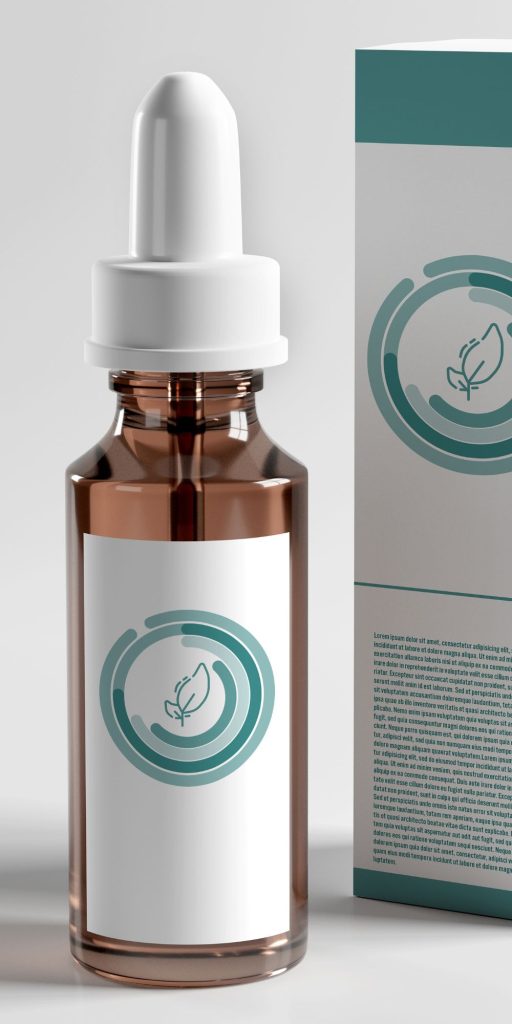Table of Contents
Packaging Label Design: The Art of Mindful Innovation

Packaging Label Design
In today's competitive market, its design packaging label it plays a vital role in attracting consumer attention and increasing sales. To stand out on crowded shelves, brands must embrace thoughtful innovation and tap into the limitless creative potential of packaging labels.
Gone are the days of generic, uninspired labels. Today's consumers crave authenticity, personalization and a meaningful connection with the brands they choose. By incorporating thoughtful innovation into package label design, brands can capture consumers and differentiate themselves from the competition.
But what exactly is careful innovation in design packaging labels? It's about more than just aesthetics. it's about understanding consumer needs and values and aligning them with brand identity. From sustainable materials to interactive elements, from storytelling to sensory experiences, mindful innovation encompasses a wide range of tactics that engage and delight consumers.
The importance of package label design
THE design of the packaging label is often the first point of contact between a product and a consumer. It is the visual representation of a brand's identity and values and has the power to make a lasting impression. In a crowded market, where consumers are faced with an overwhelming number of choices, a well-designed packaging label can be the deciding factor in whether a product is purchased or not.
A well-executed package label design can communicate that quality, the uniqueness and value of a product. It can evoke emotions, evoke memories and create a sense of anticipation. It can also create a sense of trust and credibility, especially when aligned with brand promises and values.
In addition to attracting consumers, the design of the packaging label also plays a key role in product differentiation. It allows brands to stand out from their competitors and create a distinct identity in the market. By embracing thoughtful innovation in packaging label design, brands can create labels that not only catch the eye, but engage the consumer on a deeper level.
Understanding the consumer mindset
To create packaging labels that resonate with consumers, it is essential to understand their mindset and preferences. Today's consumers are more demanding than ever. They are looking for products that align with their values, reflect their personality and contribute to their overall well-being.
Consumers are increasingly turning to authenticity and transparency. They want to know where their products come from, how they are manufactured and what impact they have on the environment. Sustainable packaging materials such as recycled paper or biodegradable plastics have gained popularity among environmentally conscious consumers.
Personalization is another key trend in consumer preferences. Brands that offer customizable packaging labels, allowing consumers to add their names or personal messages, are considered more considerate. This level of personalization creates a stronger emotional connection between the consumer and the brand.
Additionally, consumers are drawn to packaging labels that tell a story. Whether it's the story of how the product was created, the inspiration behind its design or the journey of the brand itself, the narrative adds depth and meaning to the packaging label. It helps consumers feel more connected to the brand, making them more likely to choose it over competitors.
Trends in packaging label design
THE design of the packaging label is constantly evolving, driven by changes in consumer preferences and developments in technology. To stay ahead of the competition, brands need to be aware of the latest trends and incorporate them into their package label design strategy.
A prominent trend is minimalism. Clean, simple designs with plenty of white space have gained popularity in recent years. Minimalist packaging labels convey a sense of elegance, sophistication and modernity. They also allow the product to take center stage, emphasizing its quality and craftsmanship.
Another trend is the use of bold, vibrant colors. Bright, eye-catching hues can instantly grab attention and create a sense of excitement. Colors have a profound effect on consumer perception, and brands use this to their advantage by carefully choosing colors that align with their brand personality and evoke the desired emotional response.
Typography also plays an important role in package label design. Unique and distinctive typefaces can give a brand a strong visual identity and make it instantly recognisable. Brands are experimenting with different typography styles, from classic and elegant to playful and whimsical, to create labels that stand out and leave a lasting impression.
The psychology of color in packaging
The colour it has a strong influence on human emotions and behavior and brands can capitalize on this by carefully choosing colors for their packaging labels. Different colors evoke different emotions and associations, and understanding the psychology of color can help brands create packaging labels that resonate with their target audience.
For example, blue is often associated with trust, reliability and calmness. Brands that want to convey a sense of professionalism and reliability can choose to incorporate shades of blue into their packaging labels. On the other hand, red is associated with energy, excitement and passion. Brands looking to create a sense of urgency or grab attention can opt for red accents on their packaging labels.
Green is often associated with nature, growth and sustainability. Brands that prioritize environmental awareness may choose to use green on their packaging labels to express their commitment to environmentally friendly practices. Similarly, yellow is associated with happiness, optimism and warmth. Brands that want to create a happy and upbeat image can incorporate yellow into their packaging labels.
Understanding the psychology of color allows brands to create packaging labels that evoke the desired emotions and associations in consumers. By choosing colors that align with their brand identity and target audience, brands can create packaging labels that make a lasting impression and drive consumer loyalty.
Incorporating storytelling into package label design
THE narration stories are a powerful tool for brands to connect with consumers on a deeper level. By incorporating storytelling into packaging label design, brands can create labels that not only inform, but also engage and inspire consumers.
One way to incorporate storytelling is to share the brand's origin story. This can include the story of how the brand was founded, the challenges it has overcome and the values and principles that drive it. By sharing this story on the package label, brands can create a sense of authenticity and create an emotional connection with consumers.
Another way to incorporate storytelling is to highlight the product journey. This may include information about the sourcing of ingredients, the production process and craftsmanship. By sharing this information on the package label, brands can convey a sense of quality and care, making consumers feel more confident about their purchase.
Additionally, brands can use storytelling to highlight the impact their products have on consumers' lives. This may include sharing testimonials, showing before and after transformations, or illustrating product benefits. By sharing these stories on the package label, brands can create a sense of aspiration and inspire consumers to choose their product.
Sustainable packaging and environmentally friendly design
In today's environmentally conscious world, sustainable packaging has become a top priority for many consumers. Brands that embrace eco-friendly design on their packaging labels not only attract environmentally conscious consumers but also contribute to a healthier planet.
Sustainable packaging can take many forms. It may include using recycled materials such as paper or cardboard for the packaging label. It may also include the use of biodegradable or compostable materials for packaging labels, reducing the product's environmental impact.
In addition to the materials used, brands can also incorporate eco-design principles into their packaging labels. This can include minimizing packaging waste, using efficient printing techniques and reducing the overall carbon footprint of the packaging label.
By embracing sustainable packaging and eco-friendly design, brands can position themselves as responsible and forward-thinking. They can attract consumers who prioritize environmental sustainability and create a positive brand image that resonates with their target audience.
Embracing innovation in packaging label design
To really unleash his creative potential design packaging labels, brands need to embrace innovation and explore new possibilities. From interactive elements to augmented reality, from unique shapes to sensory experiences, the opportunities for innovation in package label design are endless.
Interactive elements such as QR codes or scannable labels can provide consumers with additional product information, special offers or access to exclusive content. This not only adds value to the consumer but also creates a memorable and engaging experience.
Augmented reality (AR) is another innovative tool that brands can use in packaging label design. By incorporating AR technology, brands can create interactive and immersive experiences for consumers.
For example, a food brand could use AR to show consumers how to prepare a recipe using their product, or a beauty brand could use AR to allow consumers to virtually try different shades of lipstick.
Unique shapes and designs can also make a packaging label stand out. Brands can experiment with unconventional shapes, unconventional materials or even incorporate 3D elements into their packaging labels. This not only catches the eye but also creates a sense of curiosity and intrigue.
Finally, brands can create sensory experiences through package label design. This can include using textures, embossing or even scents that evoke a certain feeling or association. By engaging multiple senses, brands can create a more immersive and memorable experience for consumers.
Conclusion: Harnessing the power of conscious innovation in package label design
In today's competitive market, package label design is more important than ever. To capture consumer attention and drive sales, brands must embrace thoughtful innovation and harness the limitless creative potential of packaging labels.
By understanding consumer mindset, incorporating storytelling, embracing sustainable packaging and embracing innovation, brands can create packaging labels that not only catch the eye, but also engage and inspire consumers. Careful innovation in packaging label design allows brands to create a meaningful connection with consumers, differentiate themselves from the competition and ultimately drive business success.



Interest Form